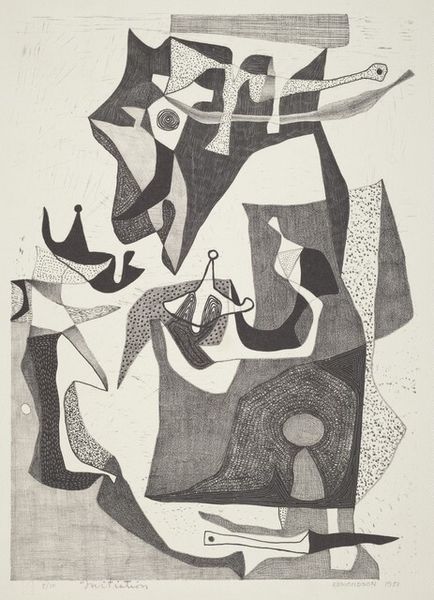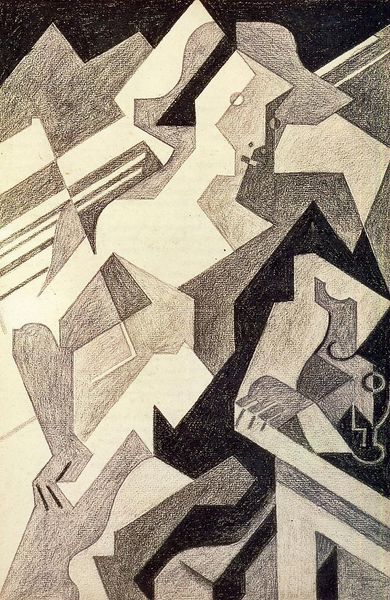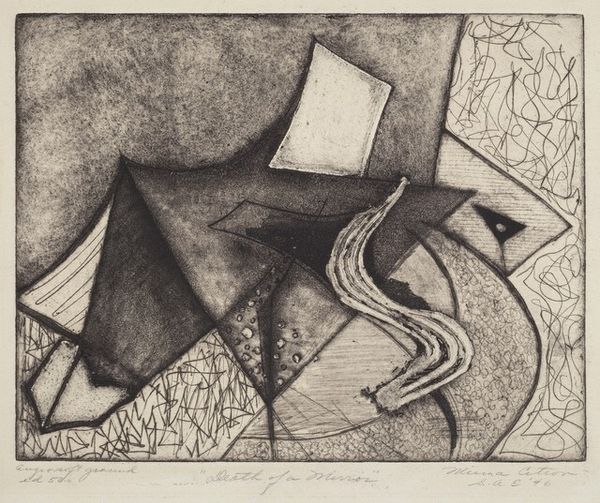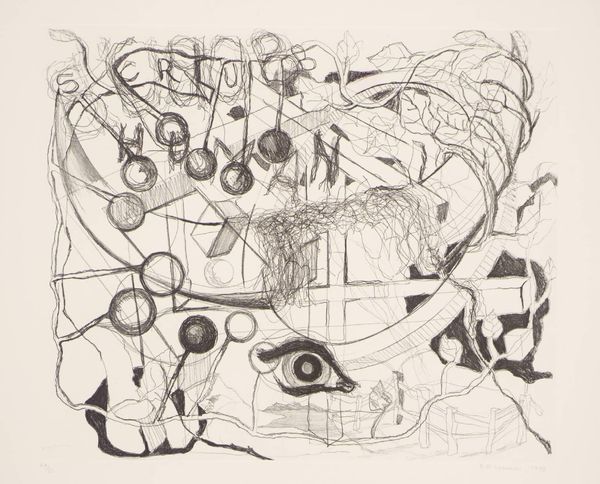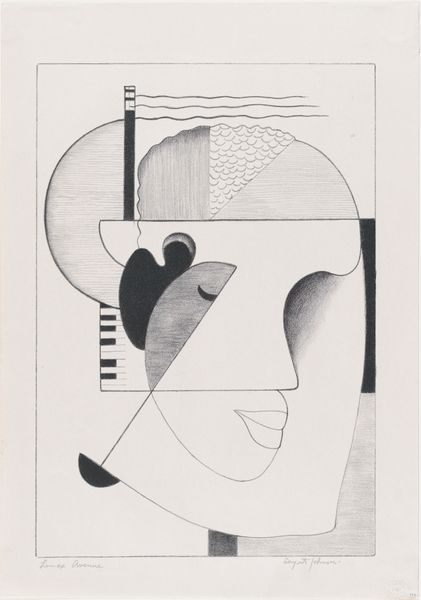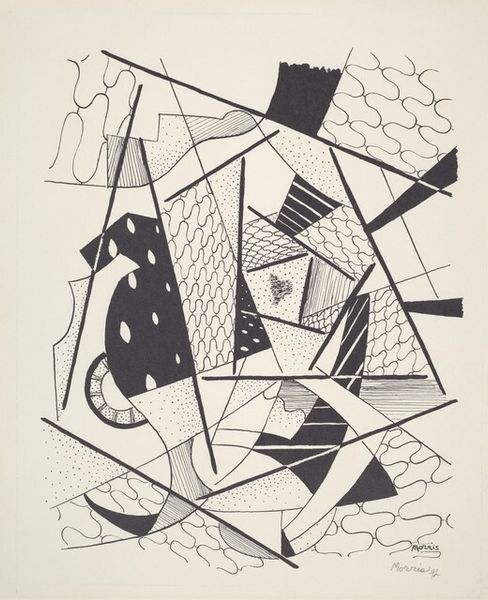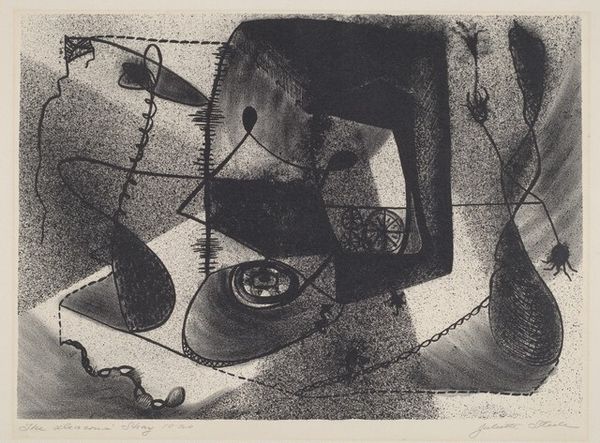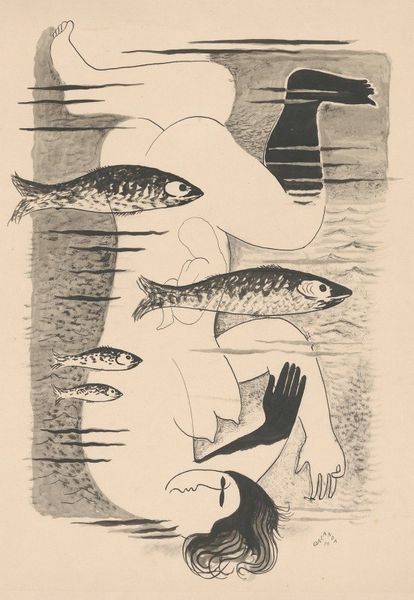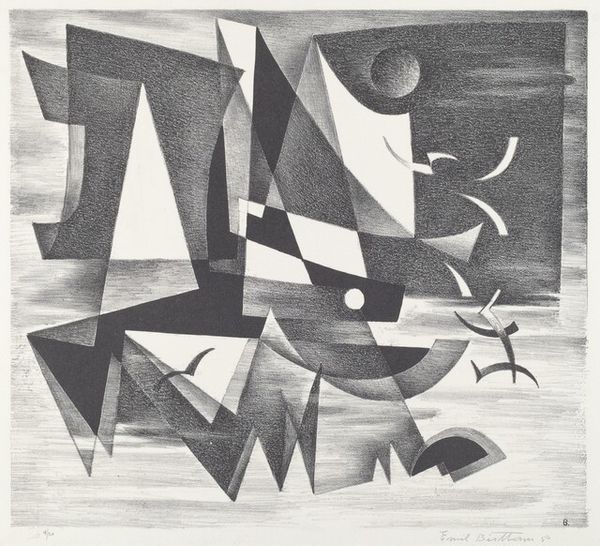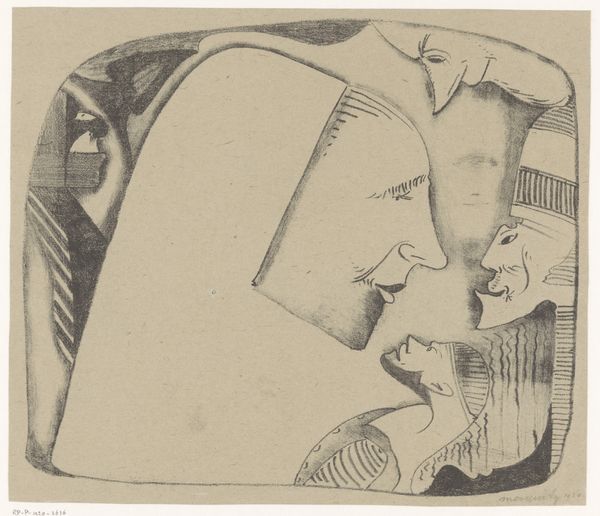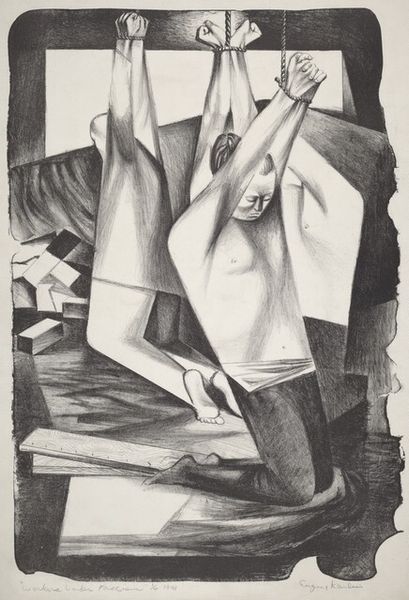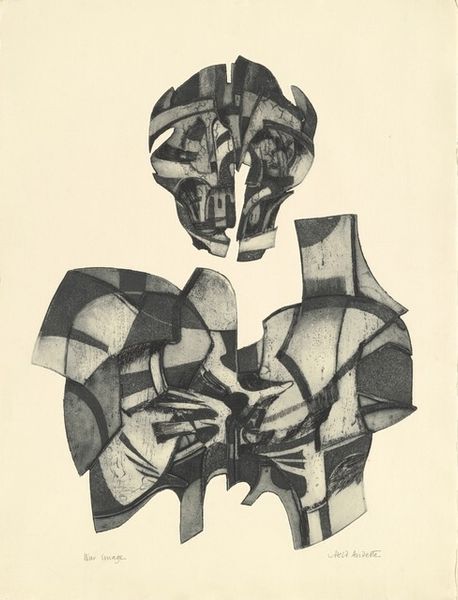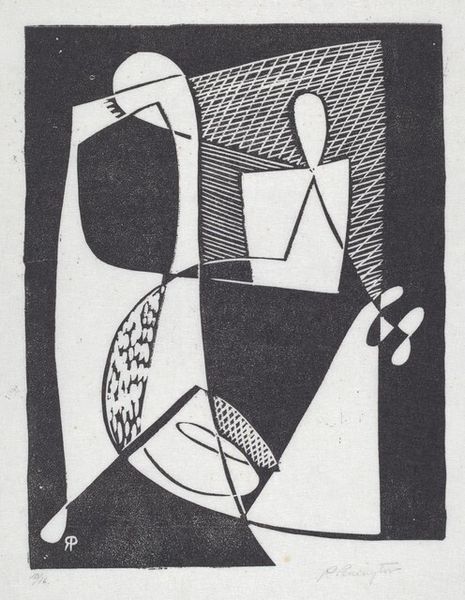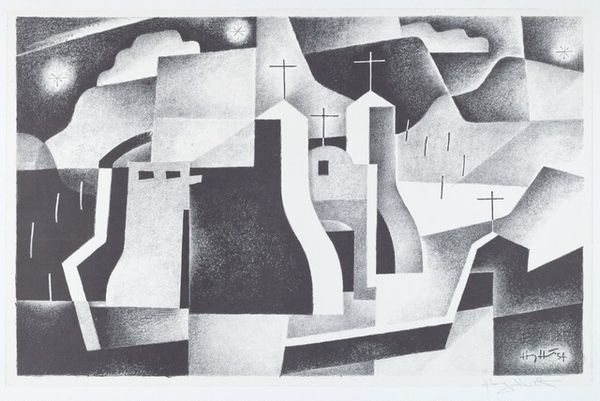
drawing, graphite
#
portrait
#
drawing
#
caricature
#
caricature
#
pencil drawing
#
line
#
graphite
#
portrait drawing
#
portrait art
#
modernism
#
monochrome
Dimensions: 27.94 x 40.64 cm
Copyright: Norman Lewis,Fair Use
Curator: Norman Lewis created this graphite drawing titled "Umbrella" in 1938. Editor: My first thought is tension. The lines feel sharp, angular; there’s a definite feeling of unease conveyed through these caricatured faces crammed under this… umbrella of protection, or is it oppression? Curator: Let's consider the materiality of the drawing. The starkness of the graphite on paper emphasizes line and shadow. Notice how Lewis employs dense cross-hatching to build volume and convey texture— almost like a printmaking process. What could this choice of medium tell us about the accessibility of art making during the period and how does the method contribute to its modernist tone? Editor: Right, and knowing this was made during the late Depression era adds layers. There’s a vulnerability here, I think. These faces, warped as they are, speak to a shared anxiety, possibly regarding economic hardship or the rise of global conflicts on the horizon. I read these figures, obscured and almost claustrophobic, as a reflection on the societal pressures experienced by marginalized communities during this period. How are they truly being sheltered and by whom or what? Curator: It's interesting how you read it as protection. To me, the umbrella also looks like it's bearing down, creating harsh shadows on the figures, perhaps suggesting the psychological weight of the prevailing social environment. The mark-making feels quite active – expressive of the artist's hand and labour, suggesting a very direct relationship between concept, process and outcome. Editor: Absolutely. Consider the composition itself, it's disjointed, faces overlap, gaze deviates from one another… it all signals disunity and discord, indicative of fragmented societal identities battling to gain purchase, and a sense of psychological trauma linked to socio-economic precarity, particularly, I suggest, as experienced within Black communities. The umbrella in this case can symbolize so much -- shelter and threat – but also of structural and social forms, maybe of class and status, that weigh heavily on these subjects. Curator: This kind of close looking at the method provides insights that you don't just get with analysis focused on what it symbolizes. It shows Lewis' process in this tense historical context. Editor: Precisely! Examining art through diverse intersectional lens makes visible these hidden histories.
Comments
No comments
Be the first to comment and join the conversation on the ultimate creative platform.
